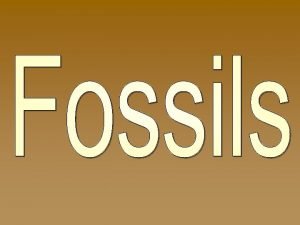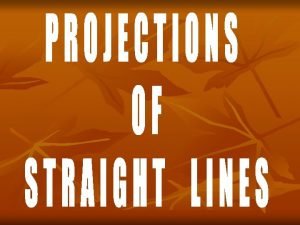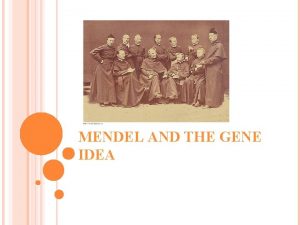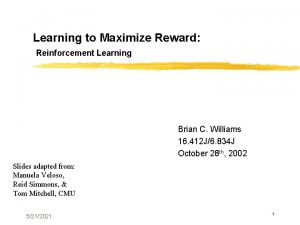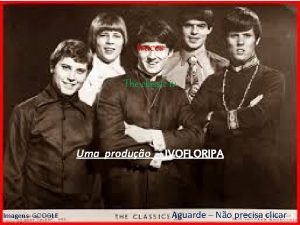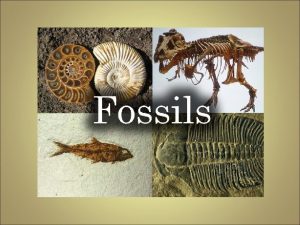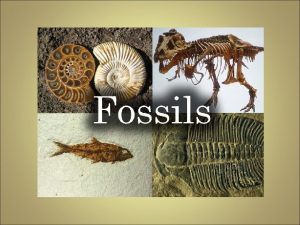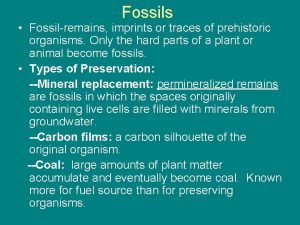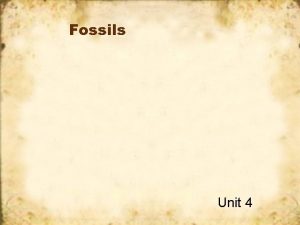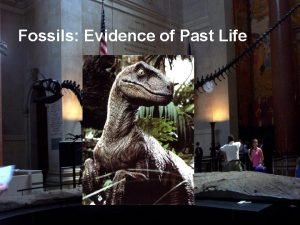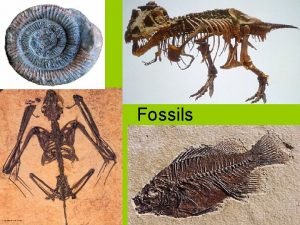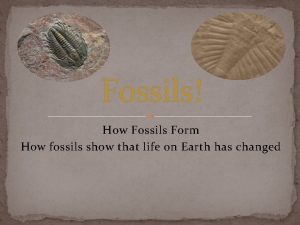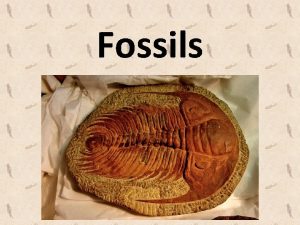Fossils Fossils are traces of organisms from the












- Slides: 12

Fossils • Fossils are traces of organisms from the past. • Index fossils can further determine the age of a fossil or the strata (layers of sedimentary rock) in which it was found. • Index fossils are fossils of organisms that existed only during specific spans of time over a large geographic area.

Index Fossils Keyed to the relative time scale are examples of index fossils, the forms of life which existed during limited periods of geologic time and thus are used as guides to the age of the rocks in which they are preserved.

Geologic Time Scale • Earth is estimated to be 4. 6 billion years old. • The geological time scale is a representation of the history of Earth. • It organizes Earth’s history by major changes or events that have occurred. • The geologic scale uses evidence from the fossils and geologic records.

Geologic Time Scale • Consists of three basic units of time 1. Eras: lasts tens to hundreds of million of years and consists of two or more time periods. Periods: lasts tens of millions of years Epochs: smallest unit of time and lasts several millions of years. 2. 3. • Periods are the most commonly used unit of time on the geologic time scale.

• • Continues today and includes all modern forms of life Mammals, flowering plants, grasslands, fish, birds, primates evolved • • Reptiles evolved Dinosaur Era • • Oldest Era Glaciers melted; seas formed Landmasses/continents formed All existing animal phyla developed over a short period of time known as the Cambrian Explosion

Early Single-Celled Organisms • Cyanobacteria is a bacterium that formed the first known fossil. • Cyanobacteria are prokaryotic cells that can undergo photosynthesis • Stromatolites are rocky structures made of layers of cyanobacteria and sediment. The above picture is a fossil of Stromatolites.

Evolution of Eukaryotic Cells • How are eukaryotic cells different from prokaryotic cells? Eukaryotic cells have cell nuclei and cell organelles. • All muticellular organisms are eukaryotic. • How did eukaryotic cells evolve? Some suggest by endosymbiosis.

Endosymbiosis • Endosymbiosis: a relationship in which one organism lives within the body of another, and both benefit from the relationship. • Theory of Endosymbiosis suggests that early mitochondria and chloroplasts were once simple prokaryotes (bacteria).

Endosymbiosis Tutorial Video http: //Endosymbiosis

Primate Evolution • What are Primates? Primates are a category of mammals with flexible hands and feet, forward looking eyes, and enlarged brains relative to body size. • Primates include lemurs, monkeys, apes, and humans. • Humans share a common ancestor with other primates. Stop following me!

• The two main groups of Primates are: Prosimians and Anthropoids. • Prosimians are the oldest living primate group. They are small and active at night. • Anthropoids are the humanlike primates.

Hominids • Within the Anthropoids are Hominoids. • The Hominoids walk upright, have long limbs, thumbs that oppose, and relatively large brains. P Prosimians Anthropoids Hominids
 Insidan region jh
Insidan region jh All types of fossils
All types of fossils Remains, imprints or traces of once-living organisms
Remains, imprints or traces of once-living organisms Multicellular and unicellular organisms
Multicellular and unicellular organisms Competitive interaction
Competitive interaction True inclination of a line with hp, is denoted by
True inclination of a line with hp, is denoted by Traces nt training
Traces nt training The pedigree below traces the inheritance of alkaptonuria
The pedigree below traces the inheritance of alkaptonuria The pedigree below traces the inheritance of alkaptonuria
The pedigree below traces the inheritance of alkaptonuria Traces nt sistema
Traces nt sistema Eligibility traces
Eligibility traces Traces classic iv
Traces classic iv A long narrative poem that traces the adventures of a hero
A long narrative poem that traces the adventures of a hero

